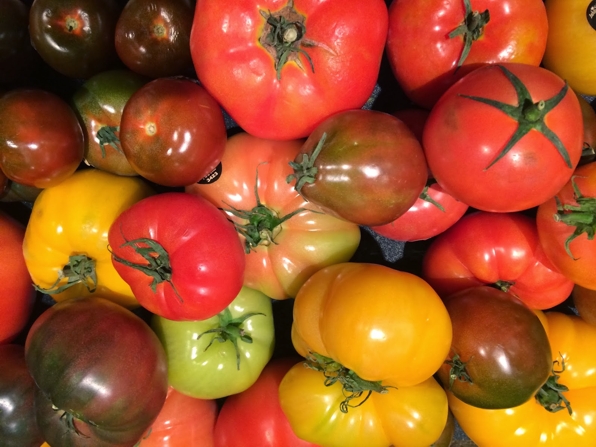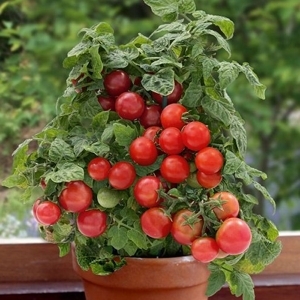Blogger colleague Jenn Stark of Happy DIY Home occasionally sends me story ideas (pointing to her stories) about new research and fresh views on veggies. This week, she offered a timely look at the ancient and venerable tomato. Timely, because, if you want to grow your own, now’s the time…
 Brighttest stars in the Tomato Galazy: From everyday Roma and Beefsteak to
Brighttest stars in the Tomato Galazy: From everyday Roma and Beefsteak to
exotic heritage varieties, they’re all available for you to grow and enjoy!
Time to plant, that is
You can grow tomatoes indoors or out, in the field, in planters, even in big bags of potting soil with slashes cut to insert the seedlings.
Speaking of which, you’ll find seedlings for the top ten or so varieties at any garden centre now. One word of caution: Don’t go overboard buying box after box of plants. A few plants, properly spaced in your growing zone, will provide all the tomatoes you can use – unless you are accustomed to preserving scads as sauce to last all year.
If you feel adventuresome, and don’t want to pay the premium price for healthy, vigorous seedlings, you can always start seeds in little peat or plastic trays. But the time for that is long past for this year. In fact, they recommend you start your flower and veggie seeds in February to have sturdy, survivable plants by now. One advantage to seeds: you can get many more varieties as seeds than the nursery folks grow as boxed plants. If you’re a fan of certain heritage types or specific cookers (like the famous San Marzanos), you’ll have to do the seeds thing.
Which begs the question…
How many types of tomatoes are generally available? This is where Jenn’s new compendium comes in. She’s tracked down and profiled no fewer than 38 varieties of the bumptious berry – any one or more of which will fill your needs and satisfy your tastes admirably. The majority of these will require you to scan the seed catalogues and order your choices in the late fall, then start the seeds in late winter as described above.
I have my faves, of course – all classics: Big Beefsteak, Cherry, Romanesco, Roma (the hands-down Italian classic), and the aforementioned San Marzano.
I urge you to explore the universe of heritage tomatoes. They’re nothing like the modern, highly-bred, uniform-flavoured types. And the colours are amazing – from white to deep purple. I occasionally get them from farm gate produce stands over the summer to add visual appeal and flavour to my seasonal salads and sandwiches.
The magic of tomatoes
Dietarily, I mean. In fact, you’ll have to go a long way to find a veggie more nutritious or flavourful.
According to Healthline.com, 1 small (100 g) raw Tomato (official USDA information):
- Calories: 18
- Water: 95%
- Protein: 0.9 grams
- Carbs: 3.9 grams
- Sugar: 2.6 grams
- Fiber: 1.2 grams
- Fat: 0.2 grams
It also contains:
- Vitamin C: One medium-sized tomato can provide about 28 percent of the Reference Daily Intake (RDI).
- Potassium: An essential mineral, beneficial for blood pressure control and heart disease prevention.
- Vitamin K1: Also known as phylloquinone, vitamin K is important for blood clotting and bone health.
- Folate (vitamin B9). Folate is important for normal tissue growth and cell function.
Not to mention a whole slew of anti-oxidant anthocyanins and other beneficial compounds.
Thanks, Jenn…
For your amazing rundown on the brightest stars in the tomato galaxy! I can’t speak for my followers, but I know I’m inspired to get my seedlings in the ground.
~ Maggie J.

